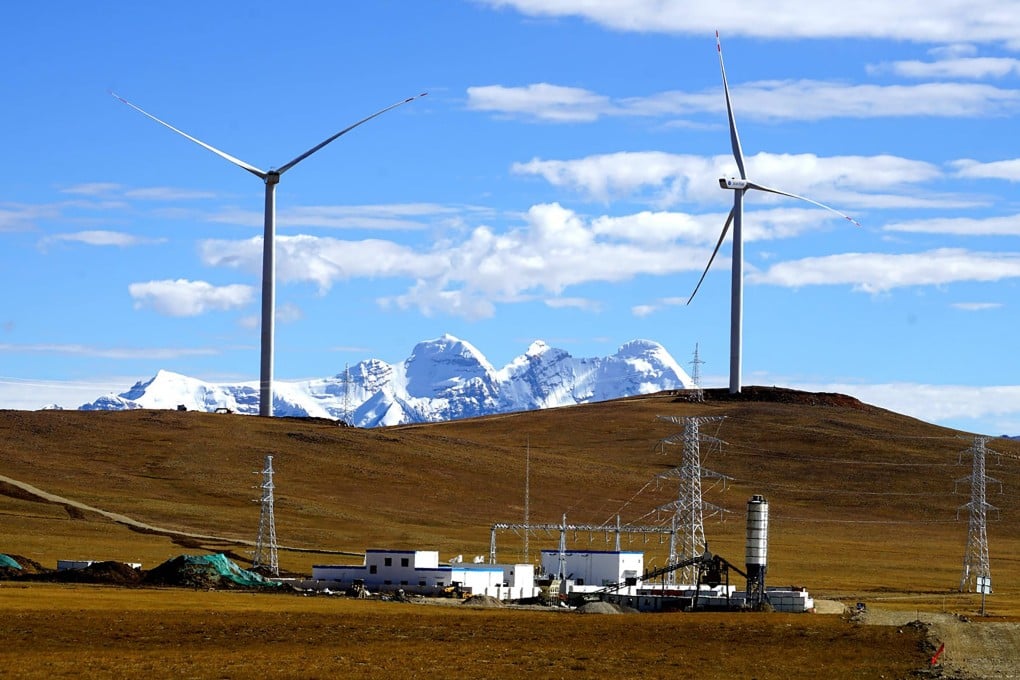China wind farm sets high-altitude records, but how do turbines keep up in the thin Himalayan air?
- Visiting the Zhegu Wind Farm in Tibet could literally take your breath away at well over three miles above sea level, and it’s considered an ideal place for a power play
- Expansion of wind farm comes as Beijing prioritises energy security while striving to move away from coal

China’s push for clean energy is testing the limits of high-altitude wind turbines in the same mountain range as Mount Everest, up where the air is rather thin.
In the Tibet autonomous region, phase two of the Zhegu Wind Farm, in the northern foothills of the Himalayas, was put into operation in Comai county on Wednesday, when 15 newly installed wind turbines were connected to local power grids.
The project, funded by the state-owned Three Gorges Corporation, is hailed as China’s highest-altitude wind farm, with parts up to 5,200 metres (17,000 feet) above sea level.
The 15 new turbines, with single-unit capacities of up to 3.6 megawatts (MW) – a record for high-altitude wind farms in China – are expected to generate 200 million kilowatt-hours of clean electricity a year. That’s equivalent to the annual power consumption of 140,000 local households, or more than 10 per cent of all Tibet families, according to a statement by Three Gorges on WeChat.
We are dispelling the misconception that it is inefficient to develop wind farms on a plateau
Its annual power generation, if fully realised, could save more than 60,000 tonnes of coal every year, reducing 173,000 tonnes of carbon dioxide emissions and 20 tonnes of sulphur dioxide emissions, according to state news agency Xinhua.
“[The wind farm] is expected to drive local economic and social development, improve local energy structure, and promote tourism to Zhegu Lake, which will have a positive effect on the country’s rural revitalisation,” China’s State-owned Assets Supervision and Administration Commission said in 2021 upon completion of the project’s first phase.